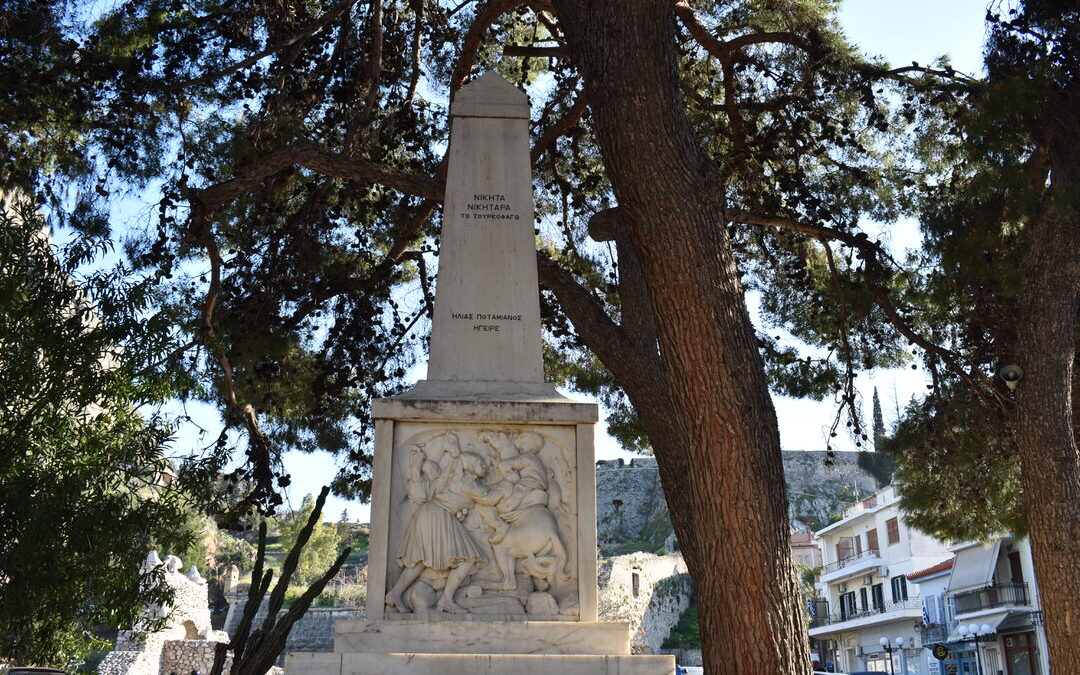The gorgeous old town of Nafplio is a timeless destination, one of the most popular choices for Greeks and travelers from abroad, who appreciate its refined neoclassical architecture, its vibrant vibe, the picturesque natural scenery that embraces the old city, as well as its rich heritage of history. Indeed, Nafplio proves to be one of the most historic cities of Greece, with signs, reminders and traces of it found literally around every corner. A true sense of a living past that moves and owes everyone who visits this gorgeous city in Peloponnese.

With its routes found in the Mycenaean era, its successive conquests by Francs, Venetians and Ottomans and the fact that after the city of Aegina, Nafplio was declared the first capital of the freed Greek State, justifies the abundance of statues, monuments and commemorative plaques on buildings that lead the visitors step by step into a journey in the glorious past.
In order to give a truly historic and mostly interesting dimension to your trip to Nafplio, you can start by tracking down the heroes of the Greek Independence War of 1821, starting with that of Staikos Staikopoulos, known for conquesting the castle of Palamidi and freeing Nafplio. You will find it on 25th of March Avenue, on your way up to the castle. You may also enjoy a stroll across Staikopoulos Park and keep in mind that if you happen to be in Nafplio on the 29th of November, you can attend the annual public event that honours his memory.



In a short distance you will come across Nikitas Nikitaras Square, where the city’s Hall of Justice stands, along with a monument dedicated to the great captain that was known as ‘’Ottomans Eater’’. Passing by the imposing statue of Ioannis Kapodistias, Greece’s first governor, you will find yourself at The Three Admirals’ Square and this time you can see the burial monument of another great field marshal, Dimitrios Ypsilandis. The location of the present square is where the Governor’s residence and administrative offices once stood, but unfortunately they were completely destroyed by fire. Further on, on Papanikolaou street, a marble plaque indicates the house where Mando Mavrogenous, the great heroine of 1821 lived, whereas following the uphill alleys that lead to Konstantinoupoleos street, another memorial plaque reminds us of the triple use of a well preserved building: It was the executive offices of Kapodistrias’ government, used in the 17th century as the residence of Aga Pasa vesir and also as the residence of the General Peloponnesian Administrator during the 2nd Venetian occupation of Nafplio.


If you continue following the commemorative plaques, you will soon come across one of Nafplio’s landmarks, the historic church of St. Spiridonas. Right outside its entrance a tragic event took place on 27/9/1831, the day that Konstantinos and George Mavromihalis murdered Greece’s governor, Ioannis Kapodisrtias. Step inside in order to observe a painting that depicts the scene with Kapodistrias falling dead outside the church.






Finally, in order to conclude this short historic journey, walk all the way up Staikopoulou St and admire the ex mosque of Aga Pasa vesir, that after several architectural alterations became the building that housed Greece’s first parliament. These days it’s often being used for temporary art exhibitions, which are also a good opportunity to take a close look at the grand round hall with the impressive dome painted in light blue.



